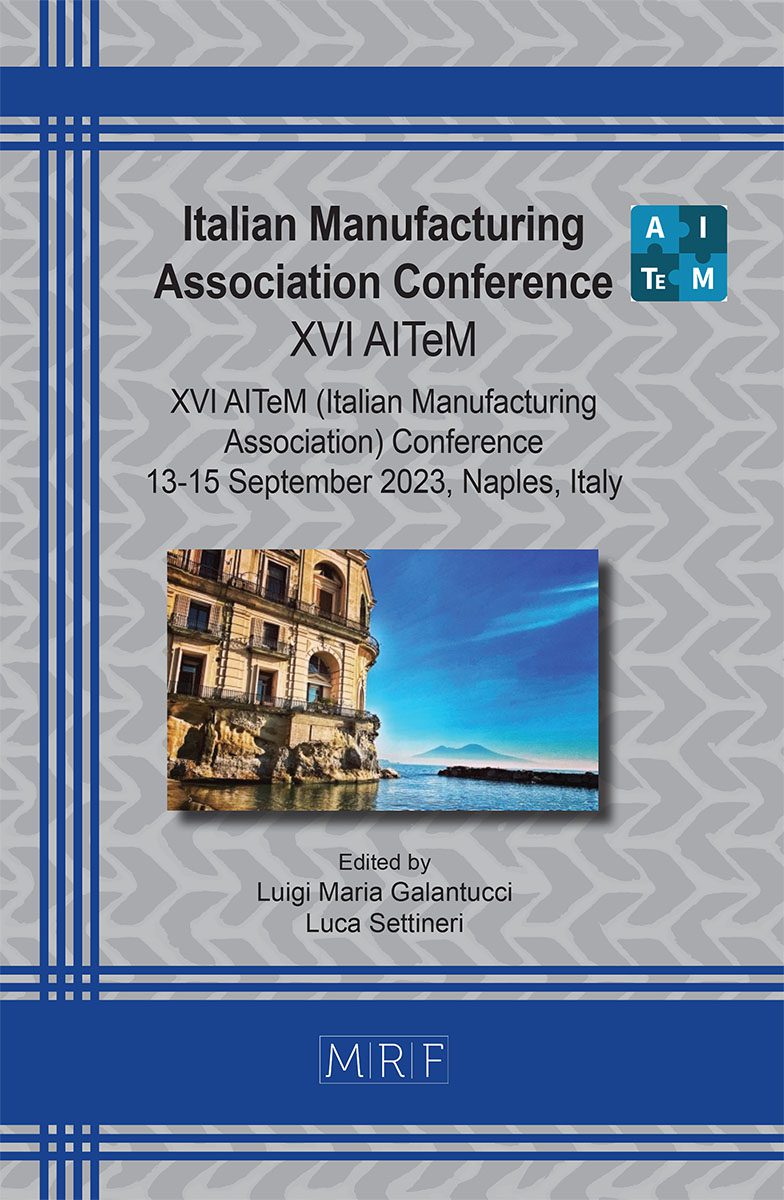Study of compostable materials for the production of transparent food containers
Giulia Cappiello, Daniele Rocco, Clizia Aversa, Massimiliano Barletta
download PDFAbstract. The aim of this work is to develop a new class of transparent containers for food packaging relying on bioderived polyesters and additives. Usually, transparent containers are manufactured using different plastic materials to achieve mechanical strength, thermal resistance, printability, good visual appearance. Yet, these containers cannot be recycled, being made by multiple polymers. This makes the management of their end-of-life troublesome. In contrast, bioderived polyester can be composted or recycled. In the present study blends of polylactic acid PLA with N,N’-ethylene(bis-stearamide) were processed by a co-rotating twin-screw extruder. The compounds were reprocessed by cast extrusion to make transparent films. Fine dispersion of ethylene(bis-stearamide), EBS, in PLA resulted in increased crystallinity, mechanical strength and thermal resistance, without compromising the transparency of the extruded films. The films were thermoformed to get the containers, whose thermo-mechanical performance were assessed.
Keywords
Biobased Naterials, Extrusion, Thermoforming
Published online 9/5/2023, 9 pages
Copyright © 2023 by the author(s)
Published under license by Materials Research Forum LLC., Millersville PA, USA
Citation: Giulia Cappiello, Daniele Rocco, Clizia Aversa, Massimiliano Barletta, Study of compostable materials for the production of transparent food containers, Materials Research Proceedings, Vol. 35, pp 28-36, 2023
DOI: https://doi.org/10.21741/9781644902714-4
The article was published as article 4 of the book Italian Manufacturing Association Conference
![]() Content from this work may be used under the terms of the Creative Commons Attribution 3.0 license. Any further distribution of this work must maintain attribution to the author(s) and the title of the work, journal citation and DOI.
Content from this work may be used under the terms of the Creative Commons Attribution 3.0 license. Any further distribution of this work must maintain attribution to the author(s) and the title of the work, journal citation and DOI.
References
[1] DIRETTIVA (UE) 2019/904 sulla riduzione dell’incidenza di determinati prodotti di plastica sull’ambiente, 2019.
[2] M. K. H. W. Y. F. D. Y. G. K. K. Hamad, «Properties and medical applications of polylactic acid: A review,» eXPRESS Polymer Letters, vol. 9, n. 5, p. 435 – 455, 2015. https://doi.org/10.3144/expresspolymlett.2015.42
[3] S. B. Palai*, «Synergistic effect of polylactic acid(PLA) and Poly(butylene succinate-co-adipate) (PBSA) based sustainable, reactive, super toughened eco-composite blown films for flexible packaging applications,» Polymer Testing, vol. 83, n. 106130, 2020. https://doi.org/10.1016/j.polymertesting.2019.106130
[4] UNI EN 13432-Commissione Europea, 2002.
[5] P. D. M. Murariu, « PLA composites: From production to properties,» Elsevier, 2016. https://doi.org/10.1016/j.addr.2016.04.003
[6] K. A. C. N. M. B. M. G. A. S. R. G. Y. A. ,. Eraslan, «Poly(3-hydroxybutyrate-co-3-hydroxyhexanoate) (PHBH): Synthesis, properties, and applications – A review,» European Polymer Journal,, vol. 167, 2022. https://doi.org/10.1016/j.eurpolymj.2022.111044
[7] L. L. O. G. M. B. S. V. M. Castillo, «Crystalline morphology of thermoplastic starch/talc nanocomposites induced by thermal processing.,» Heliyon, Vol. %1 di %2 5, e01877, 2019. https://doi.org/10.1016/j.heliyon.2019.e01877
[8] J. Z. X. &. Y. D. Chen, «Preparation and properties of poly(lactic acid)/ethylene-butylene-styrene copolymer (PLA/EBS) blends,» ournal of Materials Science, vol. 54, n. 13, pp. 9893-9903, 2019.
[9] Z. L. L. Z. Y. L. C. L. Y. L. S. &. Q. Y. Li, «Improving the mechanical properties and biodegradability of polylactic acid/ethylene-butylene-styrene copolymer blends by adding chain extenders.,» Polymer Testing, vol. 76, pp. 128-136, 2019.
[10] H. Z. X. Z. Y. &. Y. D. Wang, «Preparation and properties of poly(lactic acid)/ethylene-butylene-styrene copolymer (PLA/EBS) blends,» Journal of Applied Polymer Science, vol. 136, n. 33, p. 47854, 2019.
[11] W. T. W. P. B. e. a. Chow, «Mechanical and Thermal Oxidation Behavior of Poly(Lactic Acid)/Halloysite Nanotube Nanocomposites Containing N,N′-Ethylenebis(Stearamide) and SEBS-g-MA,» J Polym Environ, vol. 26, p. 2973-2982, 2018. https://doi.org/10.1007/s10924-018-1186-7
[12] X. C. M. Z. W. Y. H. &. W. L. Liu, «he effect of ethylene-butylene-styrene (EBS) on the crystallization, rheology, and mechanical properties of poly(lactic acid) (PLA),» Polymer Engineering & Science, vol. 59, n. 4, pp. 799-809, 2019.
[13] S. G. K. e. al., «Effect of ethylene-butylene-styrene copolymer on the crystallinity and thermal properties of polylactide,» Journal of Applied Polymer Science, vol. 117, n. 1, pp. 342-351, 2010.
[14] W. Q. B. W. W. Z. L. Y. M. C. Y. &. L. Y. Dong, «Effect of ethylene-butylene-styrene triblock copolymer on the crystallization and rheology behaviors of polylactide,» Journal of Polymer Research, vol. 22, n. 11, p. 204, 2015.
[15] C. X. J. X. X. &. Z. S. Wu, «Effects of ethylene-butylene-styrene content on the properties of poly(lactic acid)/ethylene-butylene-styrene blend films,» Journal of Applied Polymer Science, vol. 136, n. 47, p. 48113, 2019.
[16] L. S. W. Z. Z. W. X. &. L. J. Wang, «Ethylene-butylene-styrene (EBS) modified poly(lactic acid) (PLA) with improved properties for packaging applications.,» Journal of Applied Polymer Science, vol. 137, n. 22, p. 48771, 2020.
[17] H. M. X. &. G. S. Zhou, «Mechanical and thermal properties of poly(lactic acid)/ethylene-butylene-styrene copolymer blends,» ournal of Applied Polymer Science, vol. 133, n. 28, p. 43710.., 2016.
[18] B. R. V. d. S. E. e. a. Matos, «Evaluation of commercially available polylactic acid (PLA) filaments for 3D printing applications,» J Therm Anal Calorim, vol. 137, p. 555-562, 2019 https://doi.org/10.1007/s10973-018-7967-3













